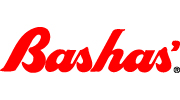Knowing which nutrients a food contains is key to selecting items that boost well-being.
Michelle Martin from AZCentral

Michelle Martin, a writer for AZCentral.com, posted this article a few months ago to help people understand what they are eating. Nutrition labels can be confusing and misleading. You may think you’re eating healthy, but you may not be.
The food pyramid no longer stands, and in its place is a plate that shows what a balanced diet should look like. With all of the changes, it’s no wonder that some people are unsure what to eat — or what everything means when they look at a nutrition label.
But reading nutrition labels and the list of ingredients can help you make healthy eating choices. Seeing what is listed — and what it is not — offers important insights about what is in the food you choose to consume.
Here’s what to look for when reading a nutrition label — and how it can help you make well-balanced meal choices when you’re shopping for groceries.
Serving size and calories
When it comes to maintaining a healthy weight, calories count. People lose weight when they burn more calories than they consume, and they gain weight when they eat more calories than they burn.
What can be confusing, however, is the number of calories listed on a nutrition label.
That’s because the calories are based on serving sizes. For instance, a nutrition label might say that a food has 400 calories, but that’s based on one serving. A 400-calorie package of cookies could actually contain four servings — and if you ate the entire package, you would consume 1,600 calories. To put that into perspective, the recommended average daily calorie intake – which depends on a multitude of factors like weight, age and physical activity – ranges from 1,600 to 2,000 for adult women and 2,000 to 3,000 for adult men.
List of ingredients
Reading the list of ingredients on a label is the best way to know what you’re actually eating. As a general rule of thumb, the first few ingredients are the most important in the list. This will help you get an idea of what is primarily in the product. For example, you’d probably want a strawberry jam to list strawberries first. Likewise, you’d want a guacamole dip to be made of avocados first and foremost, not soybean oils and artificial flavors. Ideally, you should look for labels with simple, easy-to-understand ingredients.
Unfortunately, packaged and processed goods tend to have a long list of ingredients with hidden sugars and deceptive labels. Sugar goes by many names – from maltose to dextrose, corn syrup to agave nectar and fructose to fruit juice concentrate. These hidden sugars can be found in products like store-bought salad dressings, cereals and flavored yogurt. And often times, there are multiple sugars buried in the label.
Total fat and sodium
Many people don’t know the difference between saturated fat and trans fat — the two types of fat listed on nutrition labels — and how they differ from polyunsaturated and monounsaturated fats.
Trans fat, which is usually found in fried foods, frozen pizza and stick margarine, should be limited. Opt instead for healthy fats that are found in fish, nuts and whole-milk Greek yogurt.
Another ingredient on the nutrition label to pay attention to is sodium. Processed foods, such as lunch meats, canned soups and some cheeses, contain high levels of sodium. Try to limit your sodium intake to about 2,300 milligrams per day — equal to about 1 teaspoon of salt.
Misleading claims
Check the nutrition label and list of ingredients for any potentially misleading claims. A bread that is labeled multigrain might sound healthy, but that only means that it contains more than one type of grain. Look for breads marked as 100% whole grain instead.
Another tricky claim is sugar-free foods, which typically contain sugar alcohols — look for words like mannitol or sorbitol on the label. Free-range eggs might sound great, but there is no mandated amount of time the chickens are outdoors, so do your research on each farm. And seeing the words “all-natural” might make you choose one product over another, but this claim simply indicates that the manufacturer used a natural source like fruit or rice at one point. There are no rules for what is labeled all-natural or not. The only way to really know is to read the list of ingredients.
This article was first published on the AZCentral website and can be found in full here.
